#antique millinery advertisement
Text
The Cloche, 1920s Style
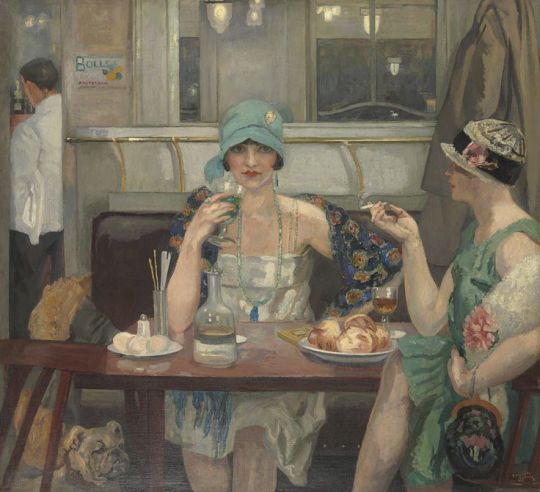
Tancrède Synave (French, 1870-1936) • Au coin de café-le soir ( At the Corner of Café-le soi) • Unknown date
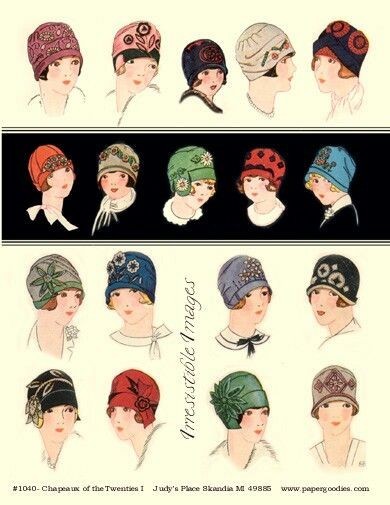

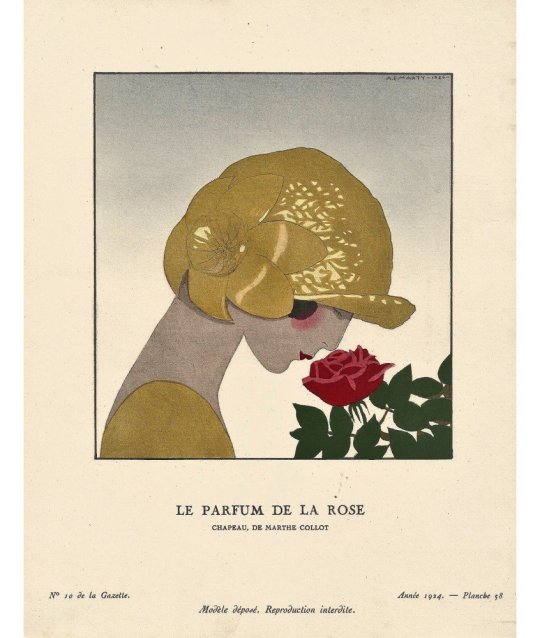
Chapeau de Marthe Collot (milenary advertisement) • 1920s

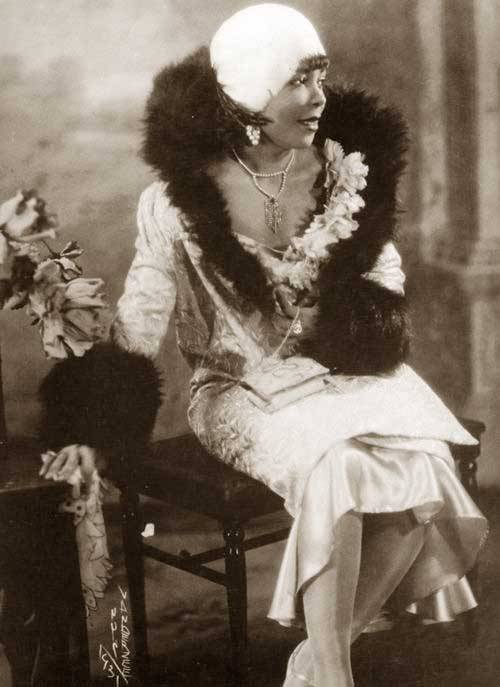
#tancrède synave#art#oil painting#painting#1920s fashion#vintage fashion#fashion history#1920s hats#the cloche#antique millinery advertisement#flapper fashion#fashion plates 20s#the resplendent outfit art & fashion blog#women's vintage hats
70 notes
·
View notes
Link
Check out this listing I just added to my Poshmark closet: The Delineator An Illustrated Magazine of Literature and Fashion November 1904.
0 notes
Text
Josie Stone: costumier
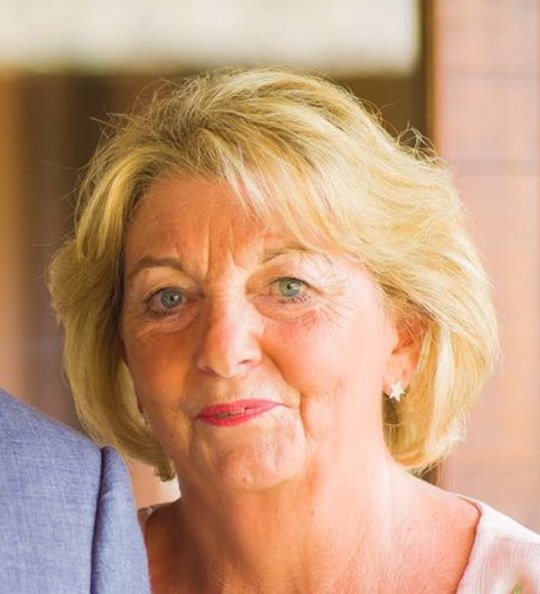
Costumier Josie Stone was born in London and lived and worked there most of her life but is now based in Rochester in Kent. She’s been in the business “going back to the Flower Power days of the sixties” in London’s King’s Road, and worked for a lot of up-and-coming pop groups, selling clothes to Tommy Roberts’ Kleptomania in Carnaby Street. She made fashion samples for designers Paddy Campbell and Katherine Cusack, and one Christmas Liberty’s department store had windows showcasing Cusack’s dresses – including one for Diana, Princess of Wales – all of which Josie had made. She also created samples for adverts in the boutique Medusa near Sloane Square.
Later Josie moved into the entertainment industry, making outfits for both the children’s and adults’ Royal Variety Performances, as well as doing TV work for the Des O’Connor Show, the Michael Barrymore Show, the Lesley Garrett and Frank Skinner shows, TFI Friday and for organisations such as Butlins and Bassline Circus. She’s made costumes for shows on cruise ships and for films such as Mamma Mia: Here We Go Again, and has made those for Thursford Christmas Spectacular for many years. Even though Thursford always credits her work, her considerable contribution to the industry has largely gone unrecognised.
She is performer Becky [Rebecca] Burford’s mother, and her son-in-law is stunt man Andrew Burford. The Widow’s Liz Arratoon has always regarded costumes as a vital part of any show and was delighted when Josie agreed to chat about her impressive – and lengthy – career.
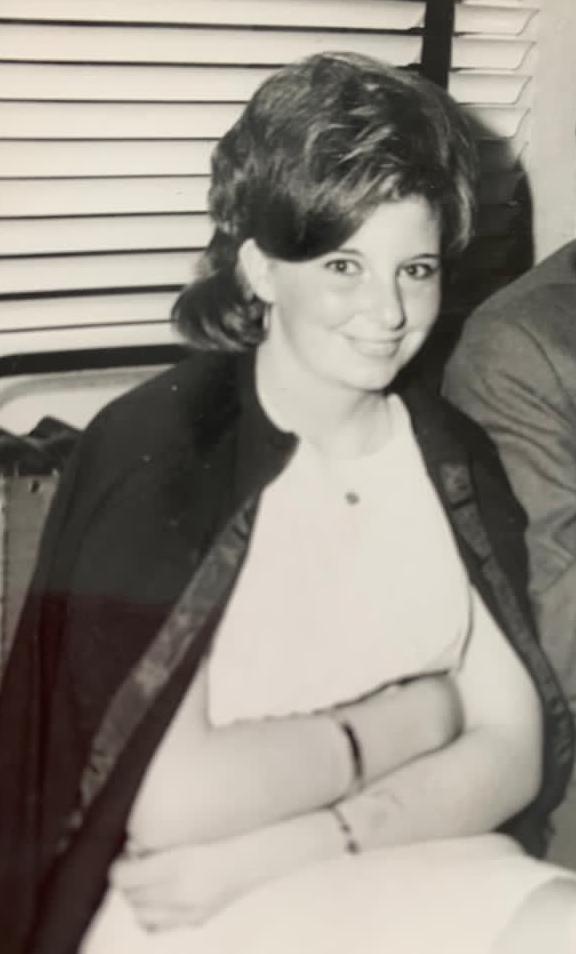
The Widow Stanton: Have you always loved clothes and fashion?
Josie Stone: It was always in me. I was one of these kids that when my mother and father bought me a sewing machine I made all my dolls’ clothes.
Was this skill in your family background?
No, my mum was very good at sewing… very good. But no they didn’t do this. My father was a printer. I learnt a lot at school and a lot from my mum. I didn’t go to college; we had lessons at school for making… millinery classes and also sewing classes.
That’s amazing! We had sewing classes at school but we never learnt anything worthwhile. How did you start out actually working in the industry?
I left school and went to a couple of places making shirts but that didn’t last long. Then I met up with this guy who had his workroom above Tesco’s in Victoria. He was very keen to start making… it was like Flower Power days but you couldn’t buy shirts and trousers and things like that for the pop groups. Those sort of things just weren’t around. So I went to work with him. It was a rented flat he lived in and we were all working in there making these things. Then he suddenly got this place down King’s Road in Chelsea called The Potato Shop; on the corner in World’s End. At the time Granny Takes a Trip was just down the road from us, with this American car sticking out the window that appeared to crash through on to the step. It was great! I mean good fun, great fun!

Do you design as well as make?
No, I don’t design. I get a drawing and that’s it. It depends on who the designer is… sometimes you get ‘I want that at the bottom, I want the skirt to look like that and the top to look like that’.
Can you remember any of the pop groups you worked for?
[Laughs] No! You’re talking a lot of years ago, lots of years ago. It was any group that was starting out in that industry and they had nowhere to buy their things. We would buy Indian bedspreads and make them into kaftans, sailors’ trousers, dyeing them all different colours and altering them, and frilly shirts that would be sold to the antique market at the Sloane Square end of the King’s Road, near the town hall. We had one floor in The Potato Shop and there were crazy carryings on downstairs in the basement. We didn’t really know what it was all about but it was a bit naughty. One night we sneaked back into the place and worked all night so this guy could get his order out.
We always hear about the Swinging Sixties… how much fun was it?
Oh, King’s Road was lovely. Beautiful, beautiful. It was a wonderful place to be in the sixties with all the Flower Power, then the punks. It was great fun; it was wonderful fun. It was all unknown to me; it was all new and that was the start of me getting into that type of work. My dad worked just off of Carnaby Street and he got us work from Kleptomania, a big, big place where all the pop groups used to go. We’d be making more kaftans and shirts with frills all down the sides and the centre. There still weren’t many shops around that were selling that type of thing. Tommy Roberts would sell to people like Jimi Hendrix and The Who. It was just fun. [Laughs] I was a single girl having great fun going from one place to the next, really.
After that I worked in a boutique called Medusa. I was downstairs making samples all the time. I didn’t used to do much production. Mainly I’d make a sample up and then if they liked it it would go off to wherever, to a factory or somewhere like that to do production. Medusa was a swinging place, it was in a little alleyway off the King’s Road next to Sainsbury’s. I believe it was called Elystan Place. It was an up-and-coming boutique. That was at the time when Zandra Rhodes was big, and those sort of people. One time we made some samples for Apple Records, the Beatles’ label, but it never came to anything.

What was the best part of your life then?
I was young and having fun and it was all the unknown. I lived then in Wandsworth Road with my parents, and these were all Chelsea people and they were different, completely different to the life I’d led, and it was just really way out, anything went. It didn’t matter what you wore, anything went. And I loved my job. I’d work any hours because I loved it. I didn’t always like the places, I’d go from job to job, but I did love my work and I then started having my own workroom. I decided I’d work from home. I worked with a friend from my first mother-in-law’s house and we were still doing the kaftans… a guy used to pull up in this black cab that was all painted with psychedelic patterns. It was at Tulse Hill – they were very quiet there – and the neighbours used to look in absolute amazement at everything going on. But we loved it, my mother-in-law loved it and it was good fun.
So, let’s jump ahead, how did the Liberty’s window display come about?
I worked for somebody called Katherine Cusack. That was just when Rebecca was born and I was working from home. I think Katherine advertised in The Stage and she wanted to start doing semi-couture work. I’d make her samples and then she’d have a party and invite all these quite wealthy people to her lounge. It was a beautiful Edwardian house in Grafton Square in Clapham Common. Then she managed to get into Liberty’s and that Christmas the whole front had all the dresses that I’d made.

Which of Lady Di’s dresses did you make?
It was a beautiful silk velvet in a beautiful deep blue. It had long sleeves and rouleau loops with little buttons all the way down. I think Di went into Liberty’s and bought it. I believe she was photographed wearing it for The Lady. Katherine was over the moon. But it was real pain to make because silk velvet takes its own route. It’s not the easiest of fabrics to work on because it’s so soft. It is beautiful but it’s not easy to make. You’ve go to have the right feed on your machine otherwise when you’re joining the seams up you’ll lose it and it will be longer one end.
Josie! That dress was later auctioned for thousands and thousands! £48,000, I believe.
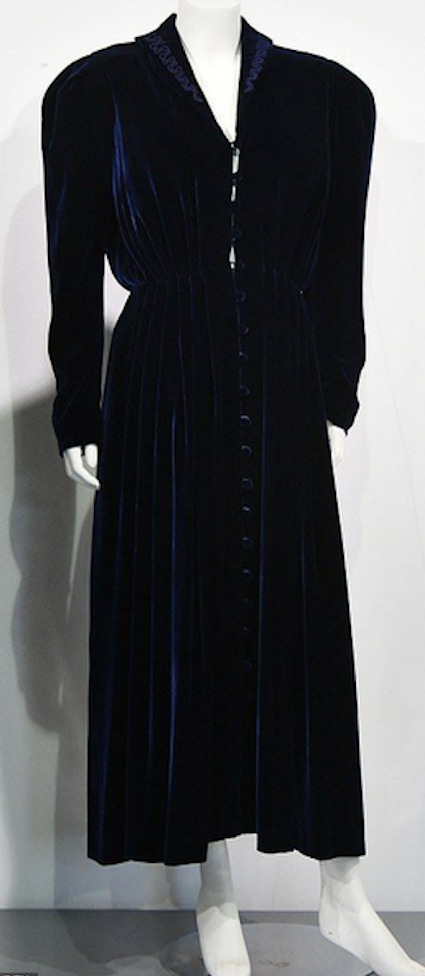
How did you make the move into showbusiness?
I moved into that when Rebecca started at Sylvia Young’s. They used to put on shows all the time because it’s a theatre school and I started making costumes. Then I went on to doing the children’s Royal Variety.
Is that how you got on to the adults’ Royal Variety Performance?
I’d got into a workroom at Acton doing samples for someone I met on the children’s Royal Variety. Then I went into my own workroom at Acton and I used to help her out. Various different designers got my name and we took on the work. That’s how we gradually started doing all the shows. She didn’t want to go on the shows so I used to go to the studios or anywhere where the work was and I’d fit the costumes and then come back and we’d finish them, but she stayed in the workroom to do whatever needed to be done there.
Can you tell us about any really nice celebs you worked with?
Oh God, who haven’t I met? [Laughs] I worked on the Royal Variety for years with a wonderful designer called Linda Martin. That’s years and years so that’s one helluva lot of people I’ve met. Des O’Connor was sweet. He was lovely, lovely, absolutely charming and so was his wife. We used to do a lunchtime show with him. I did that for a lot of years. Michael Barrymore was also lovely. I was really upset when he went off the scene because he was a nice guy.
Does anyone else stand out?
There’s very few that weren’t nice. They were all very nice. No one was horrible. I worked on Michael Barrymore’s show at Wimbledon Theatre and there were so many celebs on it that they had to share dressing rooms. This one particular share was with Warren Mitchell and Chris Eubank. And Warren Mitchell didn’t want to share with Chris Eubank at all. At the time Chris Eubank had this electric scooter that he would go all round the corridors on it. I could understand Warren Mitchell not wanting to share with him because he was a bit wild at this point. He’s the only one I can say wasn’t very pleasant, but I think it was because he was unhappy about sharing because he and Chris were complete opposites.

Do you know how many years you’ve done Thursford for?
If we go this time, probably 20 years. The designer I work with there is Stephen Adnitt; he was Cilla’s designer. I worked with Linda Martin for 12 or 13 years doing Thursford. I’d never met Stephen, I knew of him, and he asked me to join his team. The designer gets the job and they’ll have a team and usually they keep that same team all the time. I’ve worked with him for eight years.
How many costumes might be involved in its Christmas show?
We have to dress everybody at Thursford, even the orchestra. So you have 56 singers, 23 dancers and almost two full orchestras.
So when would you start to plan something like that?
We – I work with Rita Best – would start end of May, beginning of June. Our designs would come in before then. We’d measure people and make the costumes and fit them in September. There are probably eight or nine sets of costumes to make. It’s enormous! Enormous. It’s the biggest show I think in Europe. We’d spend three weeks in Norfolk just making sure that it all works on the set; making sure that sequins don’t come off – I mean it’s covered, absolutely covered in sequins – and we’ll be sitting for hours and hours sticking them on. But again, we love it. We’d see the rehearsals and the preview and the day the show starts we’d come home. Our job was done. When I was working for Linda there, I’d be there working late at night. That didn’t happen so much with Stephen. He’d be like: “We’ve got to finish now.”
You mentioned doing millinery at school so do you do headdresses and that sort of thing?
No, I would have liked to have done but for Thursford we have a milliner who comes with us; Shirley Davis, who has also been in the business a very long time.

What advice would you give to someone wanting to follow in your footsteps?
Get into a workroom and learn how it goes. Learn how people work because what they learn at college is not how a workroom works. And really to earn any money at it, you’ve got to have a bit of speed on the machine. You can’t hang about. You can’t take a week or two or three weeks to make something. It’s nice if they can get into a workroom and see it first hand. I mean I get my work through various designers that I’ve known over the years or another maker who will ring me up completely out of the blue. Last week I helped someone out on a film. I’ll work on anything that needs a costume. I did Red or Black? at Wembley Arena, a game show developed by Simon Cowell. You could win a £1 million. It was massive. I worked with another designer called Scott Landridge, who did the children’s TV series The Worst Witch, the TV series Mile High and the sitcom Citizen Khan.
Have you had any costume disasters?
Not really. [Laughs] I’ve had a lot of late nights or working all night to finish a costume off. You get the occasional broken strap and you have to quickly run down to the stage or on to the set and pin them up, or something doesn’t fit when they arrive. But no major disasters.
Have you been doing anything during the lockdown?
Just before the lockdown we had all these shows on cruise ships lined up but that all went. At first I was making scrubs for the hospitals. I did loads of voluntary work for anyone who needed them. Sometimes they gave me the material and sometimes I’d provide it. They were using all kinds of material in the end, even bedspreads. I did that for a while and I also made these little pairs of hearts. They were to send to hospices and hospitals so the patient could have one to hold and the family would have the other one. I made them out of all the material I have here. I also did masks, but I’m not doing so many now.

Do you ever think about retiring?
No! [Laughs] I love what I do. But the work will get less and less and that will be it. I mean we’ve had hardly anything this year. We did a few bits for Butlins and a big Dame’s costume, which I don’t think ever got used because that show was cut.
Can you pick out a few career highlights?
I loved working on the Royal Variety at the Royal Albert Hall. I loved doing it in there. I did that quite a few times. Beautiful, beautiful. It’s a beautiful building and it’s just lovely to work in. If you look back at all the names that have been on the Royal and I did it for more than twenty years, there are a hell of a lot of names I’ve met. And that was quite fun.
Josie is hoping that Thursford Christmas Spectacular in Thursford, Norfolk will go ahead this year. If so, it will run from 9 November – 23 December 2021 at 2pm and 7pm.
In the meantime she can be contacted on 07956 832261 for commissions.
For Thursford tickets click here
undefined
youtube
#josie stone#costumier#kleptomania#tommy roberts#swinging sixties#king's road#granny takes a trip#thursford christmas spectacular#royal variety performance#Becky Burford#andrew burford#diana princess of wales#Katherine Cusack#Scott Landridge#shirley davis#linda martin#rita best#stephen adnitt
2 notes
·
View notes
Text
Week 8 - Industrial Design
German Immigrants and Degrees of Assimilation
I was browsing a Watertown, WI antique shop with my daughter. The first floor was crowded with displays and shoppers, so we fled upstairs. The second story was devoted to used books and records, but was also uncrowded and quiet, so we looked around. I was startled to notice words in German painted on one of the brick walls. Not graffiti, but a sign. The name Clara Weiss was clearly rendered in slightly feminized block letters with gently trailing serifs on the left side of each capital a. Beneath the name was a German word I couldn’t quite make out, even though I speak some German. The problem was that the script was true Fraktur, or broken script. I recognized it from the descriptions and examples of Blackletter in our text book (Eskilson, 2012, p. 126, but that didn’t help me decipher it. What struck me was that this was an authentic German sign, intended to be read by German speakers. In Wisconsin we often see what I think of “gentle” German script. It looks calligraphic and invokes a Europe of bygone days, yet it lacks the aggressive downstrokes, spikiness and ligatures that characterize Fraktur. On the opposite side of Main Street from Clara Weiss there is a mural celebrating the German heritage of the city that uses this alternative lettering to declare “Wilkommen in Watertown”. It struck me that the sign in the antique shop wall was sending a specific message to both the German patrons of the shop and to the non-German population. We are Germans here, and this shop is operated the German way. If you are not German, maybe it is not the right shop for you; we are not making accommodations. I took a photo of the sign and decoded it when I got home. The mystery word was Putzgeschaft or milliner. I searched online for more information and discovered that the Clara Weiss Millinery was operating in Watertown from about 1890, and the building was constructed for that concern[1].
The German population in Watertown could afford to be exclusive, because they were so numerous[2]. They were resistant to the isolation and marginalizing that can happen to smaller populations of immigrants. The latter may be what fosters the type of assimilation practiced by immigrants like my grandfather William Behm. William was born in Germany in 1896 and came to the US as a teenager with his twin brother and a sister. He did not join a large, established German population, but lived a quiet rural life occupied by farming and trapping. By the time he was an adult, he had fully adopted English and was never heard to use German in daily activities. My Grandmother Mildred was also fully German, and the two could easily have conversed in German, but they didn’t. None of their ten Children learned the language and, aside from some family photos, there were no items from Germany in their home. They practiced a “full immersion” assimilation that completely exchanged their German identities for American, though there is some evidence that they may have quietly attended church services occasionally conducted in German. It is instructive in divisive times to reflect on these diverse patterns of assimilation. Where immigrants make up large majorities of a population, they are likely to congregate and nurture the speech and traditions of their homeland, and to work actively to preserve and share their culture. We established Americans need to stop seeing this as a threat and appreciate different ways. Germans in Watertown brought their traditions of early childhood education in the form of Kindergarten, and their love of singing and cultural performances, which, in time became Watertown Turnverein and later Turner Opera House which still stands[3].
As I looked for design observations in Week 8, I was strongly influenced by the German propaganda poster shown on Eskilson (2012) p. 269. The text, rendered in Fraktur, compels citizens to “kauft Deutsche Ware” or buy German goods, so I captured images of items and places from or related to Germany. I was surprised that I could not find anything marked “made in Germany”, even items that I purchased in that country. I couldn’t help but think of my grandfather shedding his German-ness as he became American. Besides the Eskilson text, my observations included:
--The wall sign for Clara Weiss, Putzgeschaft
--A sign advertising the site of the first Kindergarten in America
--Turner Hall in Watertown, WI, which began as the Watertown Turnverein, a German social and cultural organization
--“Wilkommen in Watertown”, a mural celebrating the city’s German heritage featuring the “gentle German” script that has come to stand in for authentic Fraktur.
--St. John’s Evangelical Lutheran Church
Hints that my grandparents may have occasionally reconnected with their German past at their Lutheran Church:
--The stamp that embosses my father’s baptismal certificate from St. John’s Evangelical Lutheran Church—it reads “Ev. Luth. St. Johannes Gemeinde (German for St. John’s Parish) Lake Mills Wis” suggesting it might have offered services in German.
--One of several monuments in St. John’s cemetery that bears a German inscription, another suggestion that assimilated German Americans might have briefly engaged with their native culture and language in that setting.
--A bespoke hat and a cuckoo clock from the Bavaria region of Germany. No labels or inscriptions mark them as German, though I know that is their origin. Like my grandparents they have become American. The hat came from a millinery shop much like the Clara Weiss shop must have been. It was called Der Hutmacher, another German term for milliner.
[1] Wisconsin Historical Society, Wisconsin Architecture and History Inventory, "Merchants National Bank; Clara Weiss Building", "Watertown", "Jefferson", "Wisconsin", "76220".
[2] Watertown Historical Society (2018). Settlement. [online] Watertownhistory.org. Available at: http://www.watertownhistory.org/Articles/Settlement.htm [Accessed 16 Mar. 2019].
[3] WHS Library-Archives Staff (2009). A Brief History of Watertown | Wisconsin Historical Society. [online] Wisconsin Historical Society. Available at: https://www.wisconsinhistory.org/Records/Article/CS2389 [Accessed 16 Mar. 2019].
0 notes
Text
Don’t Miss Pottsville
When I have the opportunity to tour a specific area of the country, I like to explore small towns. I'd rather stay at a quaint bed and breakfast than a hotel with a familiar name. Given the choice between a Mom-and-Pop diner or a well-known chain restaurant, I'll always opt for the former.
On occasion I find a little spot that really piques my interest. My most recent discovery is a delightful little town in Pennsylvania called Pottsville. It lies just west of Allentown and northeast of Harrisburg. As a handy stop along Route 61, this hub offers lots of lodging, dining, and shopping options. It's a cross between a farming community and a center for business serving the needs of its residents.
On my first day in Pottsville, I found a beautiful lavender farm that is owned by a friendly couple. They grow several cultivars of lavender and harvest them all by hand. The rows of purple blossoms are a sight to behold. Since I was visiting the area in late spring, I got to see the flowers at their peak. Southern Pennsylvania has a lavender festival each year in June.
I spent the following days of my trip roaming around the town and checking out the local diners and sub shops. At some restaurants, patrons are encouraged to build their own sandwiches. Breakfast buffets are popular especially on weekends. My favorite eateries in Pottsville were the small, family-owned establishments that have returning customers among the locals. When the cooks and servers call the clientele by their first names, the restaurant has a hometown atmosphere.
I wandered into an antique car museum during my trip and got a pleasant surprise. I felt as though I had stepped into a time machine and traveled back to the 1950's. From the street, the museum looks like just a "hole in the wall" but it has more memorabilia than one might expect. In fact, every inch of the building is filled with collectibles.
The classic cars on the property are a big attraction because they are beautifully restored. The walls are packed with old car advertisements and auto-related pictures from the Pottsville area. Upstairs the museum has a nostalgic soda shop and a lot of antique items like kitchen gadgets and sewing machines. A long stay is required in order to see everything that the museum has on display.
Perhaps my favorite section of the museum is the millinery; it has a nice collection of ladies' hats from days gone by. The building itself is a significant relic of Pottsville. It dates back to possibly the 1930's as a car dealership. Old renovated houses can be seen in the Historic District between Morris Street, Laurel Boulevard, 4th Street, and Railroad Street. Even the old armory on North Centre Street is worth a visit.
Pottsville is a unique, friendly little town that is a must-see when you're traveling in Central Pennsylvania. It's remote enough to have a down-home personality but conveniently close to some bigger cities.
Pottsville Orthodontist
Originally Published Here: Don’t Miss Pottsville
0 notes
Link
Check out this listing I just added to my Poshmark closet: The Delineator An Illustrated Magazine of Literature and Fashion November 1904.
0 notes